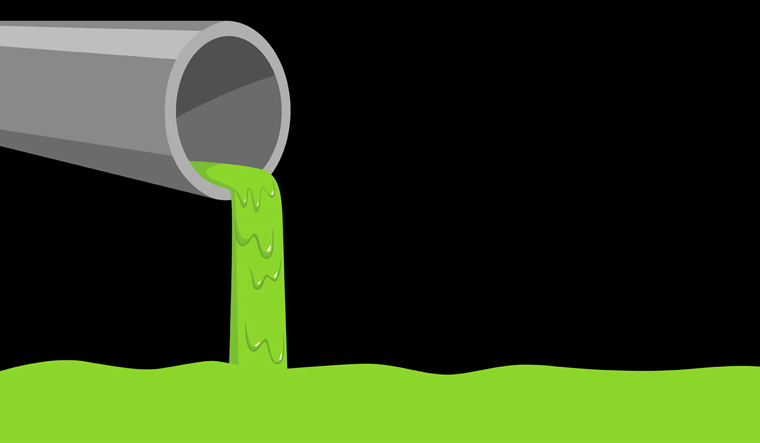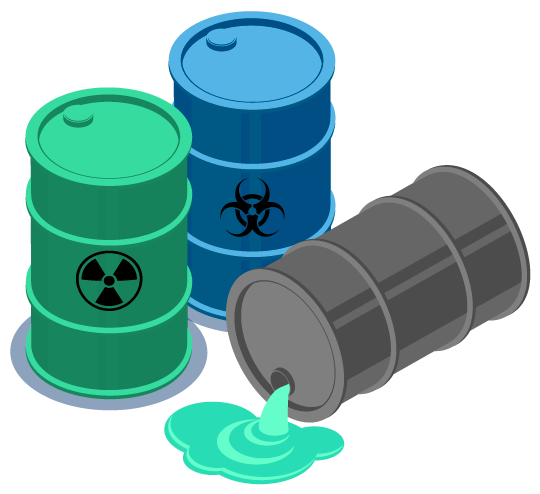Leading Industrial Wastewater Treatment Solutions: Making Certain Compliance and Effectiveness
Leading Industrial Wastewater Treatment Solutions: Making Certain Compliance and Effectiveness
Blog Article
Just How Fluid Waste Disposal Works: A Thorough Introduction of Methods and Technologies Employed

Review of Liquid Waste Types
The intricacy of fluid waste kinds necessitates an extensive understanding of their attributes and effects for disposal. Fluid waste can generally be classified right into numerous kinds, consisting of commercial, local, agricultural, and harmful waste. Each group displays distinct homes, needing certain management strategies to mitigate ecological and wellness dangers.
Industrial liquid waste originates from making procedures and typically includes a series of contaminants, such as hefty steels, solvents, and organic compounds. Municipal fluid waste, mainly making up wastewater from households and business establishments, contains natural matter, nutrients, and pathogens (industrial wastewater treatment). Agricultural fluid waste, including drainage from farms, may have plant foods, chemicals, and animal waste, posing threats to water quality and environments
Hazardous liquid waste is defined by its poisoning, reactivity, or potential to trigger harm. Comprehending these varied fluid waste types is critical for developing effective disposal techniques and making certain conformity with environmental policies.
Physical Treatment Techniques

Testing is the first action, where larger bits and debris are eliminated from the liquid waste using screens or grates. This procedure shields downstream tools from damages and makes sure smoother operation. Complying with screening, sedimentation makes use of gravitational pressure to separate solids from liquids. In sedimentation containers, much heavier particles settle at the base, developing a sludge layer, while the cleared up fluid can be additional treated.
Filtration is an additional necessary technique that involves passing the fluid through permeable materials, such as sand or membrane layers, to record smaller fragments. This step enhances the top quality of the liquid, making it ideal for subsequent therapy processes.

Chemical Treatment Strategies
Chemical therapy techniques are necessary for properly taking care of fluid waste, especially in addressing dissolved and colloidal impurities that physical techniques might not properly get rid of. These techniques use numerous chemical representatives to reduce the effects of, precipitate, or change harmful substances right into much less harmful forms.
One usual technique is coagulation and flocculation, where chemicals such as alum or ferric chloride are included in promote the aggregation of put on hold fragments. This procedure improves sedimentation, enabling much easier elimination of the resulting sludge. Additionally, oxidation procedures, using agents like chlorine or ozone, are used to damage down complicated natural compounds and pathogens, rendering the waste much safer for discharge or additional therapy.
Neutralization important link is one more critical method, which adjusts the pH of acidic or alkaline waste streams to neutral levels, preventing potential injury to downstream systems and the environment. Moreover, advanced oxidation processes (AOPs) make use of mixes of oxidants and ultraviolet light to weaken persistent contaminants, attaining a greater degree of treatment performance.
Organic Therapy Processes
Organic therapy procedures play a vital duty in the monitoring of liquid waste by making use of bacteria to break down natural issue and reduce contaminant degrees. These processes can be generally categorized into anaerobic and cardio treatments, each employing certain microbial areas to attain reliable waste destruction.
Cardiovascular treatment includes using oxygen to assist in the malfunction of natural materials by microorganisms. This process is frequently implemented in activated sludge systems, where aeration containers supply a conducive environment for microbial growth, causing the oxidation of organic pollutants. The resultant biomass can be divided from dealt with effluent via sedimentation.
On the other hand, anaerobic treatment occurs in the lack of oxygen, relying upon different germs to break down organic matter. This approach is particularly advantageous for high-strength waste, as it creates biogas, a renewable resource source, while lowering sludge production. Technologies such as anaerobic digesters are often used in industrial and community applications.
Both cardio and anaerobic organic treatments not just lessen the ecological effect of fluid waste however also facilitate resource healing, making them vital components of lasting waste monitoring approaches. Their efficiency, flexibility, and effectiveness sustain their extensive execution across numerous sectors.
Emerging Technologies in Disposal
Innovative methods to liquid waste disposal are quickly developing, driven by advancements in innovation and a raising emphasis on sustainability. Amongst these emerging modern technologies, membrane bioreactors (MBRs) have obtained grip for their capacity to incorporate organic therapy with membrane filtration, resulting in top quality effluent that can be recycled in various applications. MBRs make it possible for smaller sized impacts and much more reliable procedures contrasted to click site conventional systems.
An additional appealing advancement is the use of anaerobic digestion combined with nutrient recovery modern technologies, which not just treats liquid waste yet likewise creates biogas and recuperates valuable nutrients like nitrogen and phosphorus. This dual advantage boosts resource efficiency and lowers environmental effect.
Additionally, advanced oxidation procedures (AOPs) are being embraced for the destruction of intricate organic toxins. These methods utilize powerful oxidants and stimulants to break down impurities at the molecular level, offering a very efficient solution for difficult waste streams.
In addition, the assimilation of expert system and device discovering in waste monitoring systems is enhancing operational performance and anticipating maintenance, bring about lowered costs and improved environmental conformity. These modern technologies show a considerable shift in the direction of even more sustainable and effective fluid garbage disposal techniques.
Conclusion
In verdict, efficient fluid waste disposal requires a comprehensive understanding of different techniques and technologies. By continuously advancing these methods, it becomes possible to resolve the growing obstacles connected with liquid waste, inevitably contributing to ecological defense and source recuperation.
Fluid waste disposal is an important element of ecological monitoring, needing a detailed understanding of get redirected here numerous strategies and modern technologies customized to various waste kinds. Liquid waste can generally be classified into several types, consisting of commercial, metropolitan, agricultural, and unsafe waste. Agricultural liquid waste, including overflow from ranches, may consist of fertilizers, pesticides, and pet waste, posturing dangers to water top quality and environments.
Different physical therapy methods play an essential duty in handling liquid waste effectively - industrial wastewater treatment.In final thought, efficient fluid waste disposal requires a comprehensive understanding of different strategies and innovations
Report this page